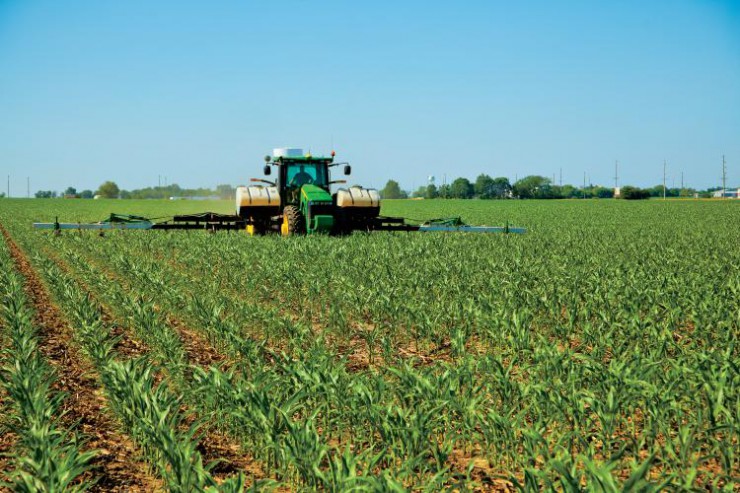Home > Illinois > Illinois Crops & Livestock > An Overview of Illinois Agriculture Facts and Statistics
An Overview of Illinois Agriculture Facts and Statistics

Dive deep into Illinois’ agriculture industry, and you’ll find out that it is much more than crops and commodities. The Prairie State takes business seriously, whether it is educating consumers about the hard work of Illinois farm families and where their food comes from, or continuing its worldwide reign as a leader in swine breeding and genetics.
The state boasts 72,200 farms that average 358 acres each. These farms work to produce some of Illinois’ top agricultural products, such as corn, soybeans, pork, wheat and cattle. The state’s fertile soil gives farmers room to grow a variety of other crops too, including oats, sorghum, fruits and vegetables, and specialty crops like buckwheat, ginseng, popcorn and mushrooms. Approximately 1,500 different types of soil can be found in the state, making it so fruitful that almost 90 percent of Illinois agricultural land can be used to raise crops.

Illinois leads the pack in agribusiness as well, and the state is a front-runner in industries such as soybean processing, meat packing, dairy manufacturing, service industries and foreign exports, which play a significant role in the Illinois economy. In 2014, Illinois exported $8.2 billion worth of agricultural commodities to other countries, and export from Illinois account for 6 percent of all U.S. exports. In fact, the state is the nation’s second leading exporter of soybeans and feed grains, and approximately 44 percent of grain produced in the state is used for export.
Consumers are becoming more involved than ever in the state’s agriculture industry, with readily available agritourism destinations, community gardening and an ever-growing interest in buying local. This interest is backed by the state’s legislation, which encourages consumers to purchase Illinois-produced food and products through the Buy Illinois Challenge program.
Despite setbacks from weather challenges and more, Illinois’ farmers and agricultural leaders continue to push forward, growing in their diverse and important industry.



